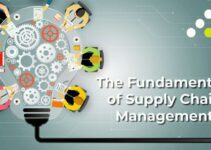Procurement plays a key role in performing business processes and activities. People used to track purchases, but the method of choosing and procuring needed goods and services is the main area of their daily operations. Today, we’ll discuss the procurement activities in supply chain management; its definition, benefits; and activities involved in the procurement process.
What is Procurement in SCM?
Before jumping into the discussion of procurement activities in supply chain; it is significant to discuss its definition. Procurement outlines various necessary steps that a company should follow to receive goods, services, and components to reach the goals and objectives of the company. The process is not fixed to any particular field or industry, but rather it would support the optimization of operations.
Nowadays, companies are operating their business globally, and it offers a bigger market of procurement options comprising different quality and pricing of materials and supplies. While developing the purchasing strategy, the main goal is to have high-quality and cost-efficient material.
Effective procuring strategy allows businesses and companies to amplify contract utilization, sourcing cycle time, risk management, supplier relationships, and compliance. Some of the main types of procurement are as follows;
- Service procuring: security services, contingent labor, contractors, or law firm
- Products & goods procuring: wholesale supplies, office items, or raw material
- Indirect procuring: utilities, marketing services, or office supplies
- Direct procuring: goods for resale, machinery, parts, or raw material
Benefits of Procurement Process in SCM
Some of the main benefits of the procurement process in the procurement activities in the supply chain are as follows;
- Well development procuring system allows companies to deal with SCM issues stemming from various factors; political and economic instability or the trade laws and regulations.
- Prevents and avoids SC disruptions that would negatively impact the operations of the company through risk management of contract, operations, and finance
- Ensures the efficiency of every step involved in the procuring cycle
- Comprehending the procuring needs and requirements of all the partners and stakeholders
- Negotiating a contract that offers high value at the lowest possible cost
- Implementing strategies to decrease the sourcing cycle time
- Recognizing the right suppliers to satisfy the needs and requirements of the company
Procurement Activities in Supply Chain
Some of the main procurement activities in supply chain management are as follows;
Specifying & Planning
First of all, a company should recognize the specific needs and requirements of its particular items and goods. It comprises of all such items that the company hasn’t bought before; subscription renewal or restocking of products and goods. It means that you should carefully analyze the smallest needs and requirements of the company; part numbers, material, and tech specifications. However, it is significant to consult with various departments and units of the company to make sure that the procuring rightly reflects the needs of all the units.
Choosing Suppliers
Finding and selecting the right suppliers that would help you to satisfy the product needs and requirements. It could be any like your preferred suppliers, developing relationships with approved vendors or suppliers, or finding and researching new suppliers. After that you have to send RFx; a request for quotation, proposal, or information.
Contracting & Negotiating
Competitive bidding allows you to negotiate the best terms and price for the product or good from the suppliers and vendors. It is significant that you should communicate directly and clearly discuss the needs, requirements, and expectations of the deal.
Purchase Order Placement
The PO (purchasing order) outlines the specification of products, price, and all other terms and conditions of the supplied product or good. It played the role of “source for truth” because the product you would procure would impact and influence different business units and departments of the company.
Expediting
Expediting means analyzing the delivery timeline of the product order like schedule changing or product obsolesce. It allows you to address all the underlying issues and problems like work completion, delivery times, and limited clarity on the payment dates.
Receipt & Purchase Analysis
It comprises of reviewing and analyzing all the orders against quality standards and well-defined specifications. It means conducting a 3-way match of the purchase order against packing documents, receiving slips, and invoicing. However, if it doesn’t meet the standard criteria, then you should develop a discrepancy report at this stage.
Payment & Invoice Clearing
You should streamline the accounts payables and procurement to complete the purchasing process of the product. Do so after streamlining the confirmation and inspections of documents like receiving documents, packing slips, invoices, and PO.
Relationship Management
It is significant that you should retain and maintain all the documented records in case of an audit, confirming product warranty or tax information to simply the product re-ordering system. It means offering data and information to the suppliers and vendors based on the KPIs to recognize the improvement needed areas.
Conclusion: Procurement Activities in Supply Chain
After an in-depth study of the procurement activities in supply chain; we have realized procuring plays a key role in various business and operational processes. If you are learning about the activities involved in the procurement; then you should keep in mind the abovementioned activities and processes.
Ahsan is an accomplished researcher and has a deep insight in worldly life affairs. He goes Live 3 days a week on various social media platforms. Other than research writing, he’s a very interesting person.


